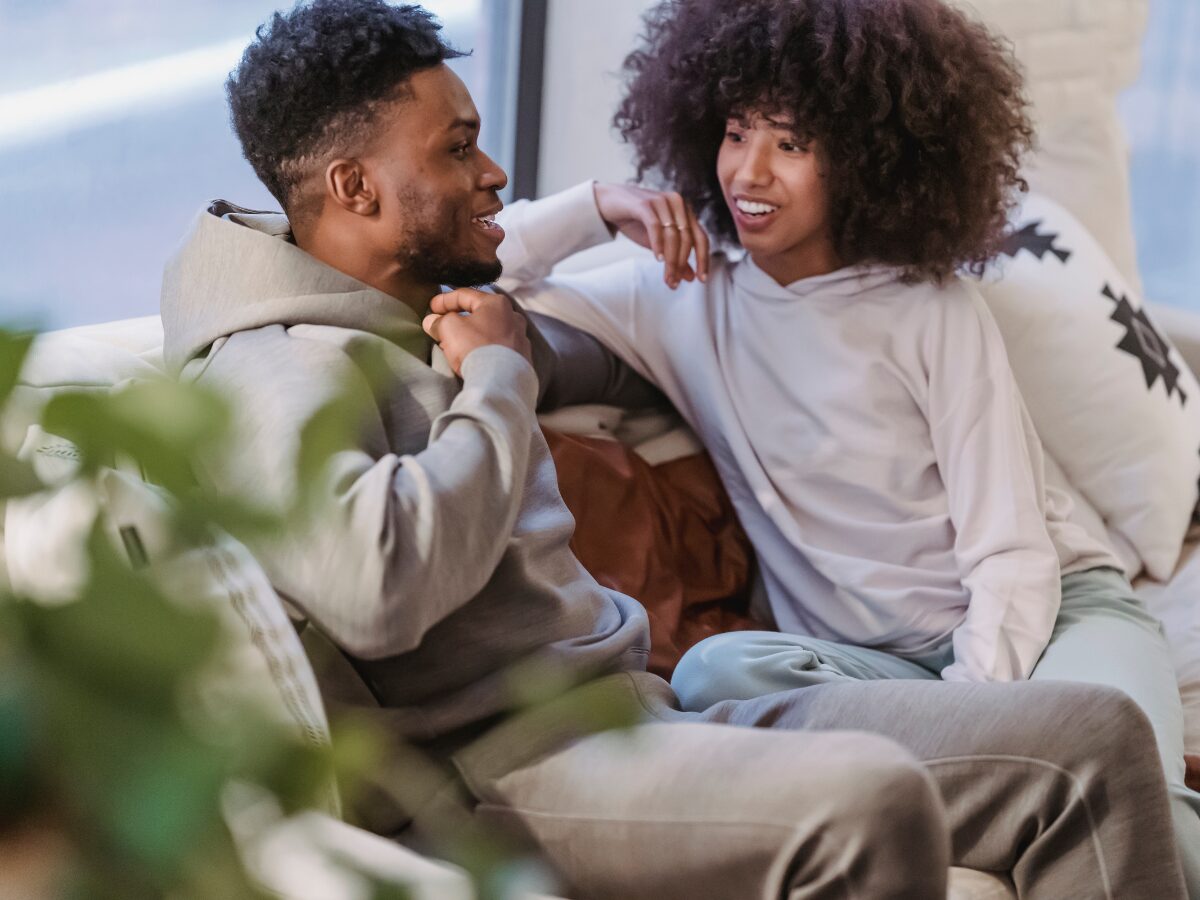Introduction
Effective communication goes beyond words, especially in relationships. Body language—the unspoken cues we express through posture, gestures, and facial expressions—plays a powerful role in conveying thoughts and emotions. For men in relationships, understanding a partner’s body language can help bridge communication gaps, making it easier to respond thoughtfully and with empathy. By learning to read her nonverbal signals, you’ll be better equipped to understand her mood and intentions, even when words are left unsaid.
This article explores key body language signals, their potential meanings, and practical tips to help you interpret these cues accurately and supportively in your relationship.
The Importance of Body Language in Relationships
Body language often communicates what words cannot. It’s estimated that over half of our communication is nonverbal, with tone and body language conveying emotions more powerfully than words alone. By becoming attuned to your partner’s body language, you gain insight into how she feels, helping you respond with sensitivity.
Adds Depth to Verbal Communication
Words are important, but body language provides depth and context, revealing emotions and underlying intentions. A smile can reinforce warmth and openness, while crossed arms might indicate discomfort or defensiveness, regardless of what’s being said.
Helps Recognise Unspoken Emotions
Not everyone is comfortable expressing emotions verbally, and some people might choose not to share certain feelings immediately. Learning to read nonverbal cues enables you to detect these unspoken emotions, allowing you to respond thoughtfully without putting her on the spot.
Common Body Language Signals and Their Meanings
Understanding common body language cues can help you interpret her emotions more accurately. Here are some signals and what they may reveal about her mood or feelings.
1. Eye Contact and Eye Movements
The eyes are one of the most expressive parts of the body, and eye contact often conveys a range of emotions.
- Direct Eye Contact: When she maintains eye contact, it usually indicates attentiveness, interest, and openness. She’s likely engaged and comfortable.
- Looking Away or Down: If she avoids eye contact or looks down, it may signal discomfort, uncertainty, or a need to process her thoughts.
- Frequent Blinking or Rapid Eye Movements: Rapid eye movement may suggest nervousness, confusion, or unease about the conversation.
2. Posture and Body Orientation
The way she positions her body in relation to you provides clues about her comfort level and interest in the conversation.
- Open Posture: An open posture, with relaxed arms and shoulders, suggests she feels comfortable and receptive. It’s a positive sign that she’s engaged in the conversation.
- Closed Posture (Arms Crossed): Crossed arms or legs may indicate defensiveness, discomfort, or a need for personal space. This doesn’t necessarily mean she’s upset; she may simply be feeling cautious.
- Leaning In or Away: Leaning in often signals interest or curiosity while leaning away can suggest that she’s feeling uncomfortable or hesitant.
3. Facial Expressions
Facial expressions can quickly convey emotions and are often the easiest to interpret.
- Smiling: A genuine smile with relaxed eyes usually indicates warmth, enjoyment, or comfort. If she’s smiling slightly with closed lips, she might be trying to mask discomfort.
- Tightened Jaw or Furrowed Brows: A tense jaw or furrowed brows may signal stress, irritation, or frustration. Noticing these cues allows you to address any potential tension constructively.
- Raised Eyebrows: Raised eyebrows can indicate surprise, curiosity, or interest, depending on the context of the conversation.
4. Gestures and Hand Movements
Hand gestures can enhance communication by adding emphasis or illustrating points, but they can also reveal emotions.
- Open Hands: Showing open palms often signals honesty and openness. It’s a positive sign that she feels at ease sharing her thoughts.
- Touching Her Neck or Face: Self-touching gestures, like touching her neck or face, can indicate nervousness or self-soothing. These gestures are common when someone is feeling vulnerable or uncomfortable.
- Playing with Objects: If she’s fidgeting with her phone, jewellery, or another object, it may be a sign of nervousness or distraction.
How to Respond to Her Body Language Effectively
Once you’ve identified certain cues, responding appropriately is key to making her feel comfortable and understood. Here’s how to address her body language in a supportive way.
1. Mirror Her Body Language
Mirroring her body language, or subtly reflecting her gestures and posture, can create a sense of connection. This technique helps foster rapport and shows that you’re in sync with her mood. For example, if she leans in slightly, you can do the same to show attentiveness.
2. Offer Empathy and Validation
If her body language suggests discomfort or hesitation, provide empathy by acknowledging her feelings without pressuring her to explain. For instance, if she’s avoiding eye contact or crossing her arms, you could say, “I’m here to listen whenever you feel comfortable sharing.” This approach respects her boundaries while demonstrating your support.
3. Give Her Space When Needed
If her body language signals that she’s feeling overwhelmed or defensive, giving her a bit of space can help. For example, if she’s leaning away or showing signs of tension, step back slightly and give her room to process. Respecting her physical and emotional space reinforces that you care about her comfort.
Avoiding Common Misinterpretations
While body language can provide insight, it’s essential to remember that everyone’s cues are unique. Here are some ways to avoid misinterpreting her signals.
Recognise Context
Consider the context of your conversation. For example, if she’s crossing her arms in a chilly room, she might simply be cold. Avoid assuming that every nonverbal cue is emotionally significant. By taking the context into account, you reduce the chances of misinterpreting her body language.
Avoid Jumping to Conclusions
Body language cues can have multiple interpretations, so avoid assuming the worst. If she seems tense or withdrawn, consider factors like her mood, stress level, or recent events. Give her the benefit of the doubt and approach with curiosity rather than judgment.
Ask Open-Ended Questions
When in doubt, ask questions that invite her to share her feelings openly. Questions like, “Is there anything on your mind?” or “How are you feeling about this?” provide an opportunity for her to express herself verbally, allowing you to gain insight into her feelings without relying solely on nonverbal cues.
Building Emotional Awareness in Your Relationship
Improving your understanding of her body language is just one part of developing emotional awareness in your relationship. Here’s how to create a supportive environment where both of you can express yourselves openly.
Practice Active Listening
Listening attentively reinforces that you value her thoughts and feelings. It involves focusing fully on her words, tone, and body language without interrupting. Active listening can help you pick up on subtle emotional cues, strengthening your ability to respond thoughtfully.
Encourage a Judgment-Free Space
Creating a judgment-free space encourages both of you to share openly without fear of misunderstanding or criticism. Let her know that her emotions are safe with you, which fosters trust and helps reduce tension during conversations.
Reflect and Communicate Regularly
Take time to reflect on your conversations and ask for feedback. This can help you understand each other’s communication preferences and body language better. By maintaining open communication, you’ll build a foundation of understanding and empathy that strengthens your connection.
Conclusion
Understanding body language can enrich communication in your relationship, providing insights into how your partner feels and helping you respond more effectively. By learning to interpret her cues, you’ll be better equipped to offer the right kind of support, whether it’s giving her space, providing validation, or encouraging open dialogue. With a combination of empathy, patience, and active listening, you create a safe environment where both verbal and nonverbal communication flow naturally, fostering a deeper emotional connection between you.


